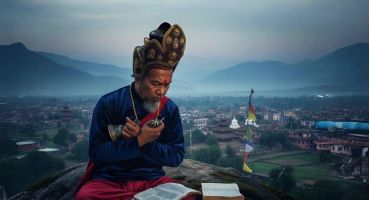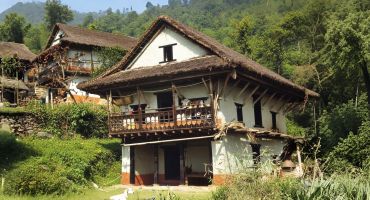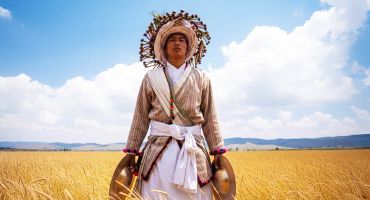In the Kirati Khambu Rai world, the event of death is classified by the nature of circumstances connected with its occurrence. As a rule, death is distinguished according to the causes of the decease. There are two basic kinds; death from old age or illness and death from accidents or violent causes. Any natural cause of death, typically of old age provides the deceased with an opportunity to exit from earthly existence to enter the spiritual realm and be united with the ancestors. During death by accident of violent means, the traumatic event that shakes a person and the sudden and irreversible removal from earthly existence does not immediately eliminate the consciousness of the material world from the mind of the deceased and while the person reaches another dimension, his instinctive tendency is to regain the previously occupied social role before his soul’s separation from the body.
Such spirits could become “ Sehe “ or wandering spirits. Female Sehe is called Mamang and male Sehe is called Halla. The spiritual realm of the female Sehe is in a space within the earth. According to the Kirat Mundhum, it is suspended in a singularity, a corner or a cave where no living man can ever enter. Male Sehe also have a definite spiritual realm. It is suspended within the living earth but invisible to our perceptions. It could be in a deep forest or a desert or a hill. Male Sehe can float with the wind and they haunt the beasts in the forest. The Mundhum says that one can control these wandering spirits. Both male and female Sehe are in unimaginable pain and to bring them back to the right location, the Mangpa uses certain instruments to float with the wind. But this can be done only when he detaches himself from his own hearth stones (Chula Dhunga) to enter the spirit world and find them.
The Mangpa makes a long spiritual journey starting from the sacred rivers of east Nepal, gathering Mundhum knowledge from Khokwalung (rock at the confluence of Arun, Dudhkoshi and Tamor rivers) and finally crossing a desert to brings back the Sehes and to put them at eternal peace.
The return of the Sehe to its rightful place is a task of spiritual restoration and a reaffirmation of the community’s connection to its ancestral heritage. By guiding these wandering spirits, the Mangpa maintains harmony between the living and the spiritual world and supports the well-being of the village. This practice reflects the Kirati belief that death is a complex transition that requires careful attention, ritual knowledge, and respect for the unseen forces surrounding human life.
The journey of the Mangpa reflects the close relationship between the physical and spiritual landscapes in Kirati cosmology. Each location, whether river, rock, forest, or desert, carries sacred significance and serves as a channel for spiritual energy. Through these rituals, the community honors the deceased and preserves its collective memory, cultural identity, and the continuing presence of ancestral spirits within the natural world. In this way, the Kirati Khambu Rai understanding of death and the role of the Mangpa embodies a deep recognition of life, death, and the continuity of existence across dimensions.





Leave a Reply